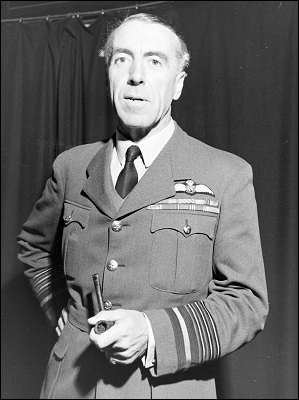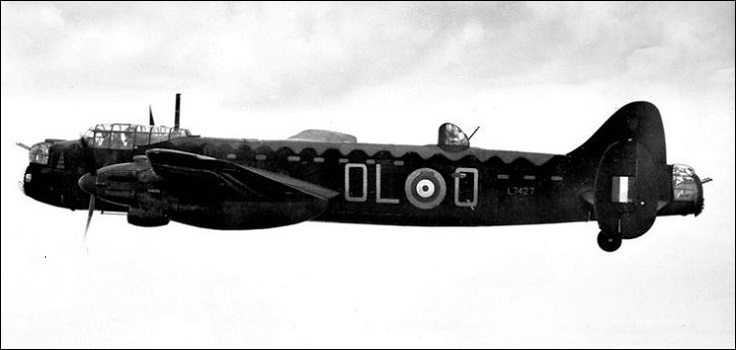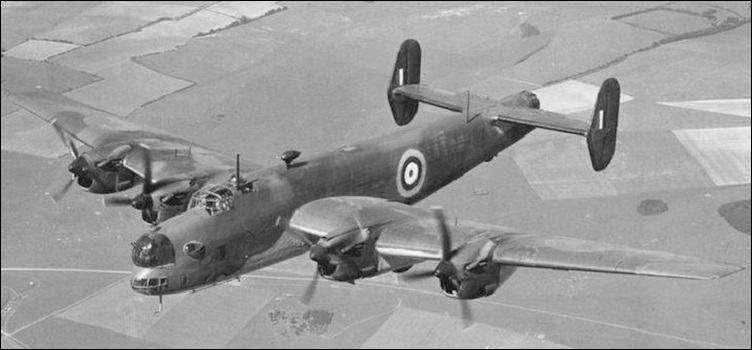● ● ●
With operations in the Balkans
underway and the invasion of the USSR impending, the Blitz
came to an end in May 1941. Germany’s 1940-41 strategic air
offensive had failed to destroy the Royal Air Force, cripple
Britain’s industrial base or collapse national morale. To be
sure, British infrastructure and industry suffered
significant damage and some 41,000 civilians were killed.
But thanks to inadequate equipment, poor intelligence and
lack of strategic focus the
Luftwaffe had failed to deliver a knockout blow.
So Britain survived to fight on—but
fight how? The Army having been ejected from continental
Europe with no prospect of an early return, there seemed but
one way of striking at Germany directly, and that was
strategic bombing. Winston Churchill recognized this as
early as June 1940. Before the war he had been somewhat
skeptical of strategic bombing theory on both practical and
moral grounds. But now, writing to Lord Beaverbrook,
Minister of Aircraft Production, he struck a different note:
“When I look round to see how we can win the war, I see that
there is only one path…an absolutely devastating,
exterminating attack by very heavy bombers from this country
upon the Nazi homeland.”
These words, of course, were music
to the ears of the RAF’s senior leaders, who despite all
earlier disappointments remained convinced that strategic
bombing was the key to victory. Around the time that
Churchill was addressing the issue to Beaverbrook, Air Chief
Marshal Sir Charles Portal, then commanding Bomber Command,
wrote to the Deputy Chief of the Air Staff:
We [Bomber Command] have the
one directly offensive weapon in the whole of our
armory, the one means by which we can undermine the
morale of a large part of the enemy people, shake their
faith in the Nazi regime, and at the same time with the
very same bombs, dislocate the major part of their heavy
industry and a good part of their oil production.
Here was encapsulated the thinking
that would lead to the devastation of urban Germany and the
deaths of some 400,000 German civilians.

The Prime Minister watches
as a Short Sterling of No. 7 Squadron takes off on 6 June
1941 (Imperial War Museum)
But the results obtained during RAF
Bomber Command’s initial 1939-41 operations—far from
satisfactory—showed that the gap between theory and practice
remained wide. Heavy losses had ruled out precision daylight
bombing, and night bombing, though it reduced losses, proved ineffective. With the aircraft and technology
available it was extraordinarily difficult to locate and
bomb targets at night, even under ideal weather conditions,
and as late as May 1941, Bomber Command estimated that
35-50% of the bombs dropped by its aircraft were landing in
open country.
There were occasional successes,
such as Operation ABIGAIL-RACHEL against Mannheim on the
night of 16/17 November 1940. Its methodology foreshadowed
the much more destructive attacks of 1943-45. Some 200
aircraft took part, the whole force being led by a special
detachment of Wellingtons carrying a maximum load of 4lb.
incendiary bombs. The fires they started would, it was
hoped, enable the main force to locate the target. Weather
conditions and visibility were favorable, and two-thirds of
the attacking aircraft found and bombed the city. Seven
aircraft were lost.
Compared with earlier operations
ABIGAIL-RACHEL was judged a success, subsequent photographic
reconnaissance showing that considerable damage had been
done to various areas of Mannheim. On the other hand, the
bombs dropped had been widely dispersed and this reduced the
effectiveness of the attack. It was clear that more bombs,
better accuracy and a clearly articulated policy were
needed.
Then a bomb landed on the RAF, in
the form of the Butt Report. In August 1941 Churchill’s
chief scientific adviser, Professor Frederick Lindemann
(later Lord Cherwell), had commissioned D.M.B. Butt of the
War Cabinet Secretariat to conduct a statistical review of
Bomber Command’s attacks on German targets. Butt examined
some 650 photographs taken during 100 attacks on 28 separate
targets. The results were devastating. Butt estimated that
only a third of the aircraft claiming to have reached and
bombed the primary target had actually done so. Since around
65% of aircraft dispatched had claimed to have found the
target, this meant that on the average only a fifth of the
bombs dropped were hitting their intended target. Moreover,
since the target point was defined as a circle with a radius
of five miles, its size was 75 square miles—which in in most
cases encompassed a good deal of open country.


Left: Air Chief Marshal
Sir Charles Portal; Right: Air Marshal Sir Richard Peirse
(Imperial War Museum)
Sir Charles Portal, by then Chief
of the Air Staff, and his successor at Bomber Command, Air
Marshal Sir Richard Peirse, both thought that the Butt
Report exaggerated an admittedly unsatisfactory state of
affairs, but they could only agree with the Prime Minister,
who described it as “a very serious paper and seems to
demand your most urgent attention.” Churchill, indeed, had
grown somewhat skeptical of the RAF’s extravagant claims on
behalf of strategic bombing. In response to Portal’s claim
that with a force of 4,000 heavy bombers, Bomber Command
could totally destroy the forty or so largest German urban
centers, he wrote:
It is very disputable whether
bombing by itself will be a decisive factor in the
present war. On the contrary, all that we have learnt
since the war began shows that its effects, both
physical and moral, are greatly exaggerated…. The most
we can say is that it will be a heavy and I trust a
seriously increasing annoyance.
This can hardly have made pleasant
reading for Portal, Peirse and their RAF colleagues.
Over-pessimistic though it may have
been, the Butt Report served the purpose of focusing the Air
Staff’s attention on the problems of navigation, target
location and bombing accuracy by night. Hitherto, reliance
had been placed on dead reckoning and the sextant—which had
proved utterly inadequate. Now the search began for fresh
technological and tactical solutions, though it would be
some time before these were forthcoming.

Avro Manchester Mk I of
No. 83 Squadron
(Eugene W. Penick Memorial Collection)
Overall, 1941 was a year of
frustration for Bomber Command. Not only did its operations
yield unimpressive results, attracting sharp criticism from
the Prime Minister, but its expansion to the size deemed
necessary for improved performance proved exasperatingly
difficult. The great need was for true heavy bombers to
supplement and eventually replace the existing twin-engine
Wellingtons, Whitneys and Hampdens. Such aircraft had been
in development since 1936 but their service introduction was
much delayed by various teething troubles, especially as
rewards engines.
Great hopes had been vested in the
Avro Manchester, whose innovative design featured two
propellers, each driven by two engines with a common
crankshaft. It was a clever idea but the engine installation
proved unreliable and though the Manchester entered service
in late 1940 it never equipped more than eight squadrons and
was withdrawn from service within a year. The Short Sterling
was more successful, though it too had some significant
design issues. The Sterling had a short wingspan for its
size, which restricted its operational ceiling. And though
it could carry a heavy bomb load, the design of the bomb bay
was such that no bombs larger than 2,000lb could be
accommodated. The Sterling entered squadron service in early
1941 and soldiered on until late 1943, when more capable
heavy bombers became available in quantity.
One of these was the Handley Page
Halifax, which entered service in late 1941. Early versions
had performance problems due to insufficient engine power,
but once this was corrected the Halifax emerged as a most
effective heavy bomber. Finally there was the Avro Lancaster, one of the
war’s most outstanding combat aircraft. Its design was based
on that of the failed Manchester, albeit with a conventional
four-engine/four-prop power installation. The Lancaster
entered service shortly after the Halifax, and together they
played a major part in the transformation of Bomber Command
into the formidable force it became in the second half of
the war.

Flight
testing the second Halifax prototype, late 1940 (Eugene W.
Penick Memorial Collection)
One other ingredient was wanting in
the effort to guide Bomber Command through its time of
troubles: leadership. Sir Richard Peirse was a capable
officer who since his appointment in October 1940 had
grappled as best he could with a challenging set of
circumstances. But by the end of 1941 he was a tired man.
The disastrous night of 7/8 November 1941, when Bomber
Command lost almost 26% of the 143 aircraft that managed to
reach their targets, led to a virtual suspension of
operations—and there were many, Portal among them, who felt
that Peirse was losing his grip. Accordingly he was relieved
of command and transferred to the Far East, there to become
commander of Allied air forces in Southeast Asia and the
Southwest Pacific. His replacement was a man whose name was
to become synonymous with the devastation of urban Germany:
Bomber Harris.
● ● ●